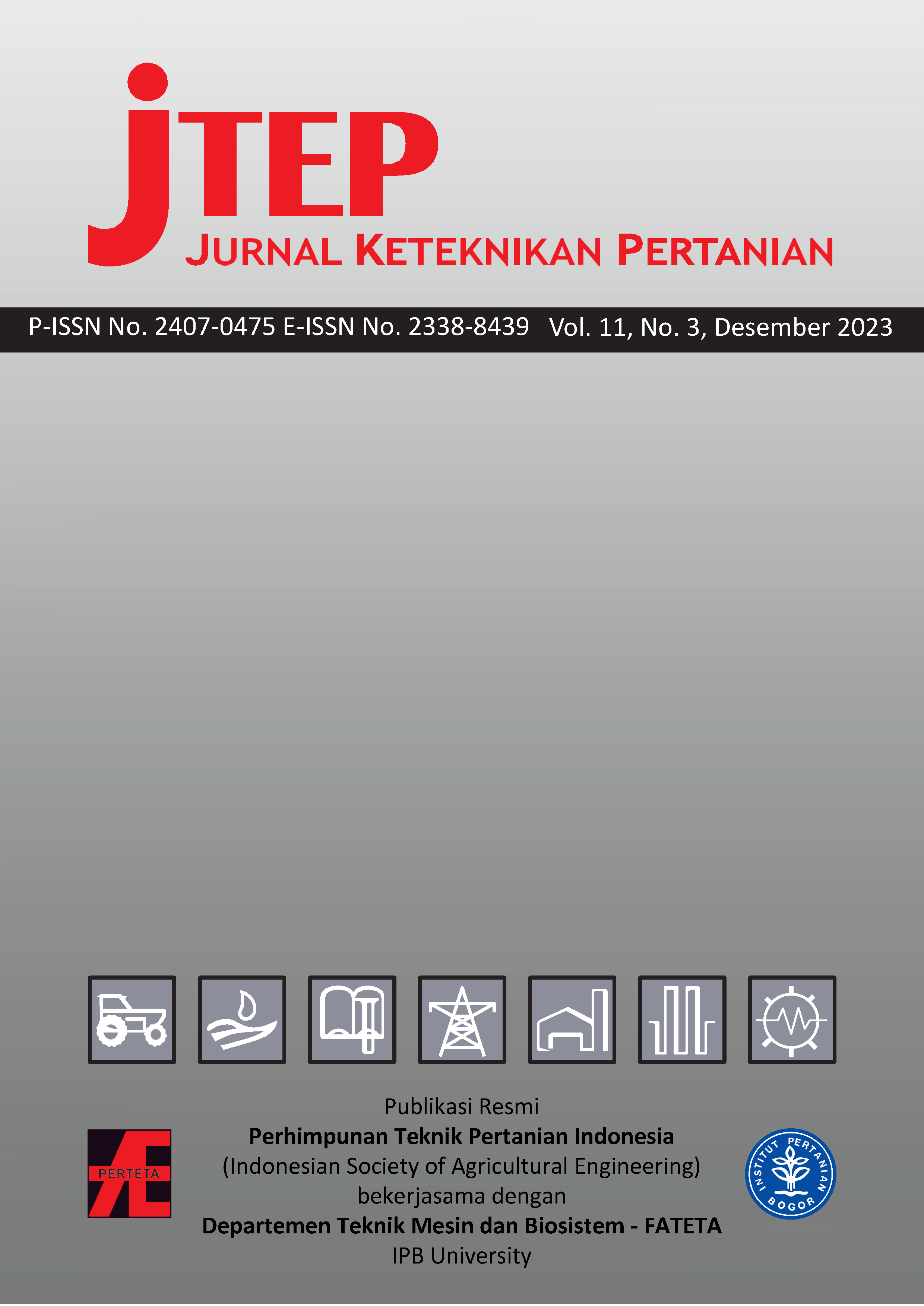Main Article Content
Abstract
The Zero Energy Cool Chamber (ZECC) is one of the environmentally friendly and cost-effective post-harvest handling technologies used for storing fruits and vegetables after harvesting. The temperature and relative humidity (RH) formed inside the ZECC storage system are highly influenced by the wall materials used. This research aims to examine the effect of sand and zeolite combinations (as evaporative media) on the temperature and RH formed inside the ZECC storage system and determine the best sand and zeolite combination for storing fresh vegetables. The constructed ZECC has dimensions of 100 (W) x 100 (L) x 50 (H) cm. The studied ZECC wall material treatments are 100% sand (Z1), 25% zeolite and 75% sand (Z2), and 50% zeolite and 50% sand (Z3). The commodities used to test the ZECC performance were tomatoes and lettuce. Quality parameters measured during storage include moisture content, texture, color, Total Plate Count (TPC), and organoleptic properties. The research results showed that the temperature inside the ZECC, after being loaded with tomatoes and lettuce, was lower and more constant than the external temperature throughout the storage period, as well as the RH inside which was higher that outside. The average internal temperature of the ZECC was 23.47°C, while the external temperature was 29.53°C. The average internal RH was 98.53%, and the external RH was 69.04%. The temperature and RH in the three types of ZECC (Z1, Z2, Z3) were not show statistically significant differences. However, the lowest quality changes, both for tomatoes and lettuce, are observed in Z3 (50% sand + 50% zeolite). The organoleptic results indicate that lettuce is acceptable to the panelists up to the 6th day of storage, while tomatoes are acceptable up to the 14th day of storage.
Keywords
Article Details

This work is licensed under a Creative Commons Attribution-ShareAlike 4.0 International License.
Authors submitting manuscripts should understand and agree that copyright of manuscripts of the article shall be assigned/transferred to Jurnal Keteknikan Pertanian. This work is licensed under a Creative Commons Attribution-ShareAlike 4.0 International License (CC BY-SA) where Authors and Readers can copy and redistribute the material in any medium or format, as well as remix, transform, and build upon the material for any purpose, but they must give appropriate credit (cite to the article or content), provide a link to the license, and indicate if changes were made. If you remix, transform, or build upon the material, you must distribute your contributions under the same license as the original.
